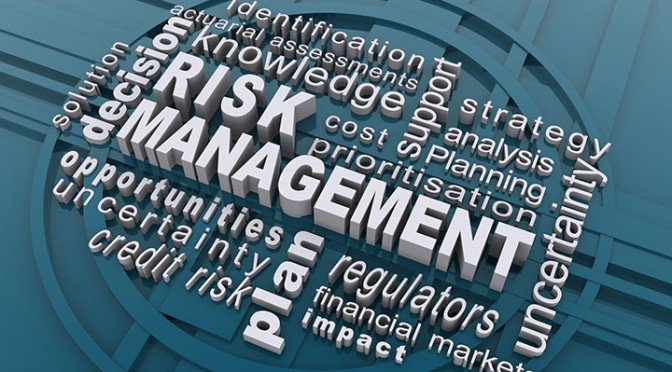A broken link in the supply chain can lead to severe disruption and is a risk only partially protected by insurance. With events of the last 18 months still presenting challenges for businesses, what more can they do to manage and mitigate supply chain risk?
The impacts of supply chain disruption can cause much more than a temporary financial loss to a business. If an organisation cannot maintain its supply of raw materials or critical component parts, in the wake of a disruptive event it could have a significant and long-term impact on revenues, profits, market position, reputation, or a reduction in investor confidence.
The ripple effect on a global scale
Recent events around the world have highlighted just how vulnerable global supply chains have become. The COVID-19 pandemic caused levels of disruption never seen before on a global scale, affecting virtually all industry sectors. Businesses worldwide are still feeling the impact, and for some the financial loss has not been survivable.
One-off incidents such as natural catastrophes or adverse weather events can also wreak havoc on businesses relying on the timely supply of goods from other parts of the world, particularly for those in industries such as construction and manufacturing. The recent Suez Canal obstruction is one such example, caused when the Ever Given container ship became wedged due to high winds, blocking all marine traffic for almost a week. The event held up around 12% of global trade at a cost of more than $10 million per day1.
Along came Brexit
Closer to home, Brexit has further complicated supply chain issues as businesses grapple with new legislation and restrictions on the movement of goods. Exports of UK goods to the European Union dropped by more than two-fifths in January, according to figures from the Office for National Statistics2 – a combination of stretched supply chains, new rules of origin for goods, and the higher cost of logistics. With margins already tight for many companies this is a challenging mix of issues.
The unfortunate combination of Brexit and the pandemic has led to a lack of employees and a slowdown of production for many companies – and it appears this will be a challenge for some time yet.
Every link in the chain may be vulnerable
It’s not just supplier failure that’s causing headaches – on the other side of the coin we have the sale and distribution of products. We have seen issues, for example, where a manufacturer is contractually obliged to take a certain amount of raw material regularly at market price, but if it cannot be processed and sold within a certain time frame and the market price changes they can end up suffering huge losses.
Some companies may also be subject to penalties for late delivery of their own product, whether that is caused by a loss on their side or that of a supplier.
Insurance is a small part of the bigger picture
Of course, the supply chain can be broken for countless reasons. Natural disaster, fire or flood damage, civil unrest, IT outage, cyber events, insolvency – the list goes on. But aren’t these all insurable risks? Potentially, yes. For your own business and its premises a business interruption policy may cover you if your premises were to become unusable for many of the above reasons. But a standard business interruption policy might not cover you if the same were to happen to one of your suppliers, causing disruption to the output or activities of your company.
It should be remembered that insurance is only one aspect of your overall risk management programme, and may only partially protect you against losses from a disrupted supply chain. This is where a risk management specialist can help you tailor your insurance to your individual needs, with policy wordings that reflect your risks wherever possible.
Rethinking the risk management approach
The impact of recent major events has forced businesses to rethink their traditional supply chain models to make them more resilient. The audit process is often not detailed enough when it comes to second or third-tier suppliers, and for many businesses there is a reliance on a single supplier in one part of the chain for certain materials or components. This ‘all eggs in one basket’ approach has caused major disruption for some, while for others ‘just in time’ sourcing has not lived up to its name in the midst of a crisis. Both approaches can quickly have a knock-on effect in the event of supplier failure.
Diversification is now very much on the agenda to help manage risk and ensure the supply chain stays strong. The geographical location of any alternative suppliers must be carefully considered and businesses must ensure they are able to get contracts in place quickly when needed that are not too onerous. Remember that your company may be thousands of miles away from a major catastrophe unfolding and yet that event could still lead to extreme complications for your business.
It is also important to ensure you have a robust business continuity plan in place and review and test it regularly. A proactive approach to risk management will help you build resilience into your supply chain for the long term.
How Gallagher can help
As well reviewing your insurance cover, Gallagher can work with you to manage and mitigate supply chain risk in the following ways:
Business Continuity Planning: Our involvement in your business continuity planning will help insurers improve their understanding of your business and your overall risk profile. Our planning services involve gap analysis to identify potential weaknesses in your existing systems, risk assessment to analyse threats and their likely effects, testing and maintenance of your plan, and training your people to prepare for potential events. We will design a suitable business continuity strategy, implement the responses and review your plan over time.
Enterprise Risk Management (ERM): ERM shifts the focus from tactical risk management to encouraging the whole business to work together to manage risk proactively – breaking it down into sections. Our approach to ERM will provide you with the confidence and knowledge you need to implement new risk management initiatives into your business, and to manage perceived risks, issues and controls via risk registers. It will also include the appropriate risk responses; avoidance, reduction, acceptance or sharing. Working closely with you, we will help you develop the tools you need to assess risks and make well-informed strategic decisions that make your business more resilient to challenges.
Contract Risk Management: Whilst time may be the essence in many situations, it is vital that any contracts are read and understood. The contracts must be considered against your Insurance Programme and a gap analysis exercise carried out. Once identified these gaps must be remedied by deletion or modification of the wordings used. This is a technical exercise and Gallagher have experienced Contract Risk Managers in place who can assist you with this.
Trade Credit Insurance: When risk exposures are constantly changing it’s important to consider how to protect your business against bad debt, for example if a customer were to become insolvent while owing you money. Gallagher can provide Trade Credit Insurance to suit your company’s individual risks and trade relationships. We are one of the largest Trade Credit Insurance brokers in the UK and have extensive experience in managing international policies – so we can continue to provide you with advice and cover as you grow your company around the world.
We are here to help you build resilience right across your business and move forward with confidence, particularly in these challenging times. To learn more or speak to a Gallagher risk management specialist please get in touch.
1. https://www.bbc.co.uk/news/business-56559073
2. https://www.thegrocer.co.uk/supply-chain/resilient-sustainable-supply-chains-are-central-to-the-future-of-uk-business/655686.article








